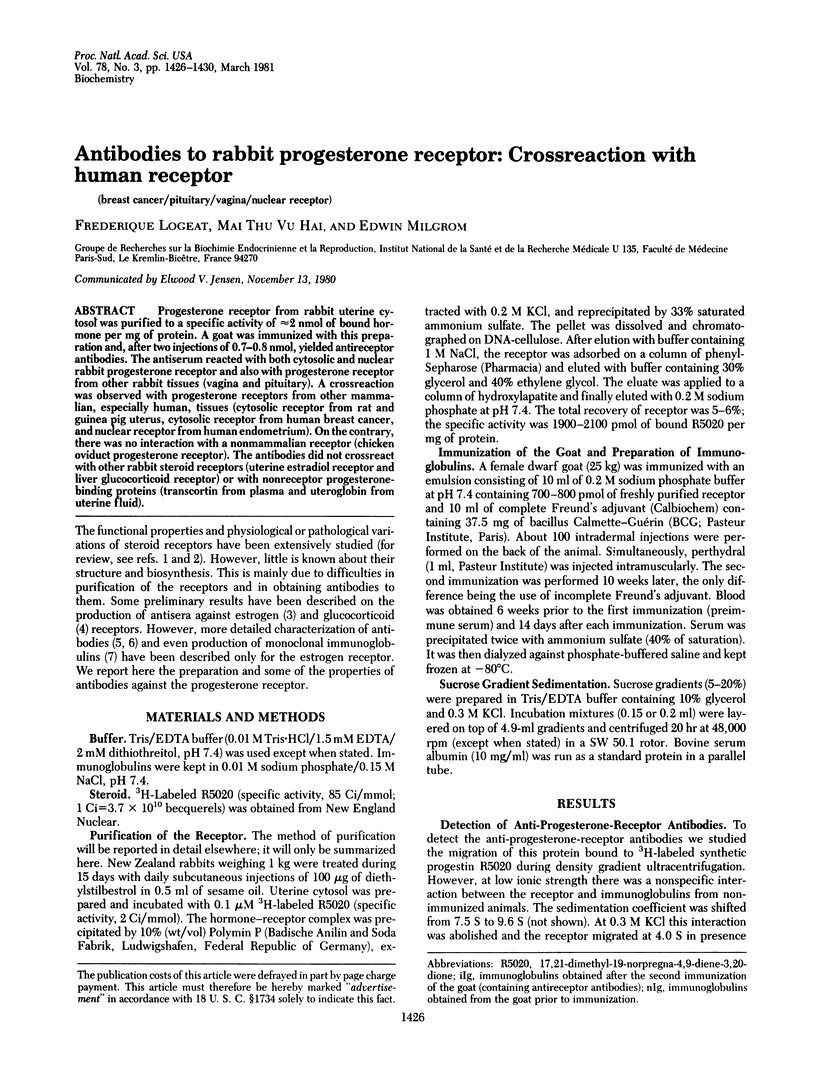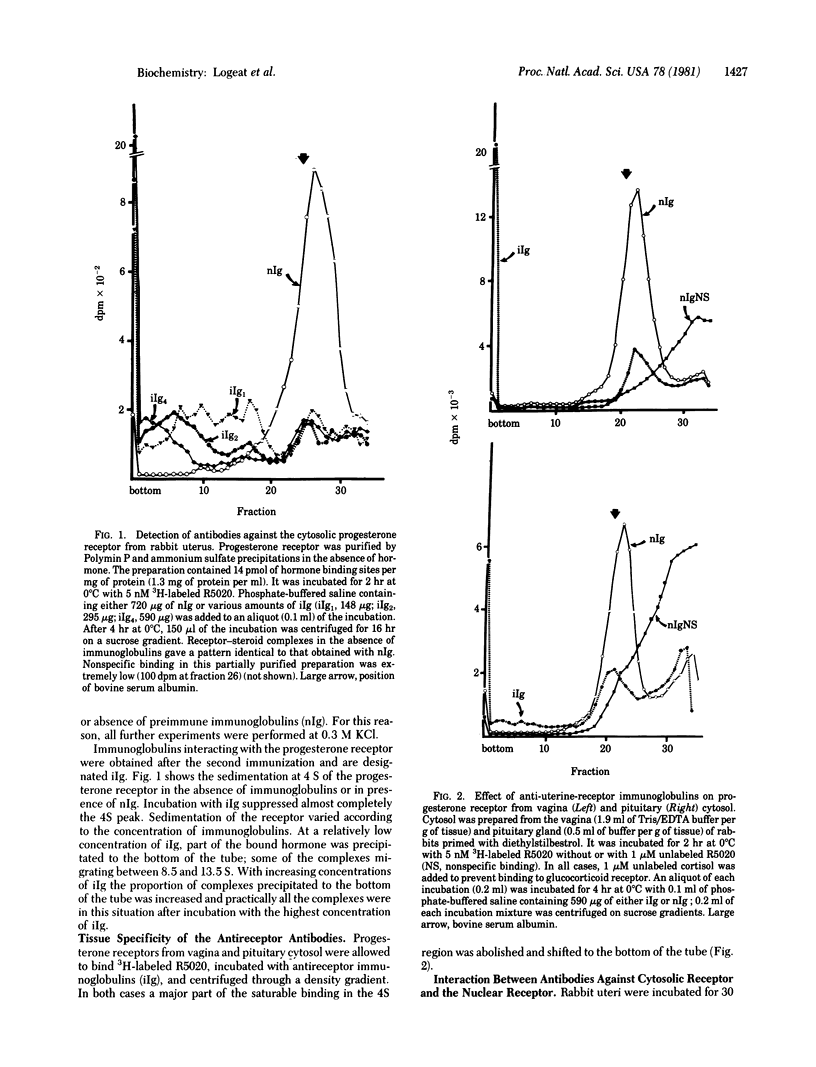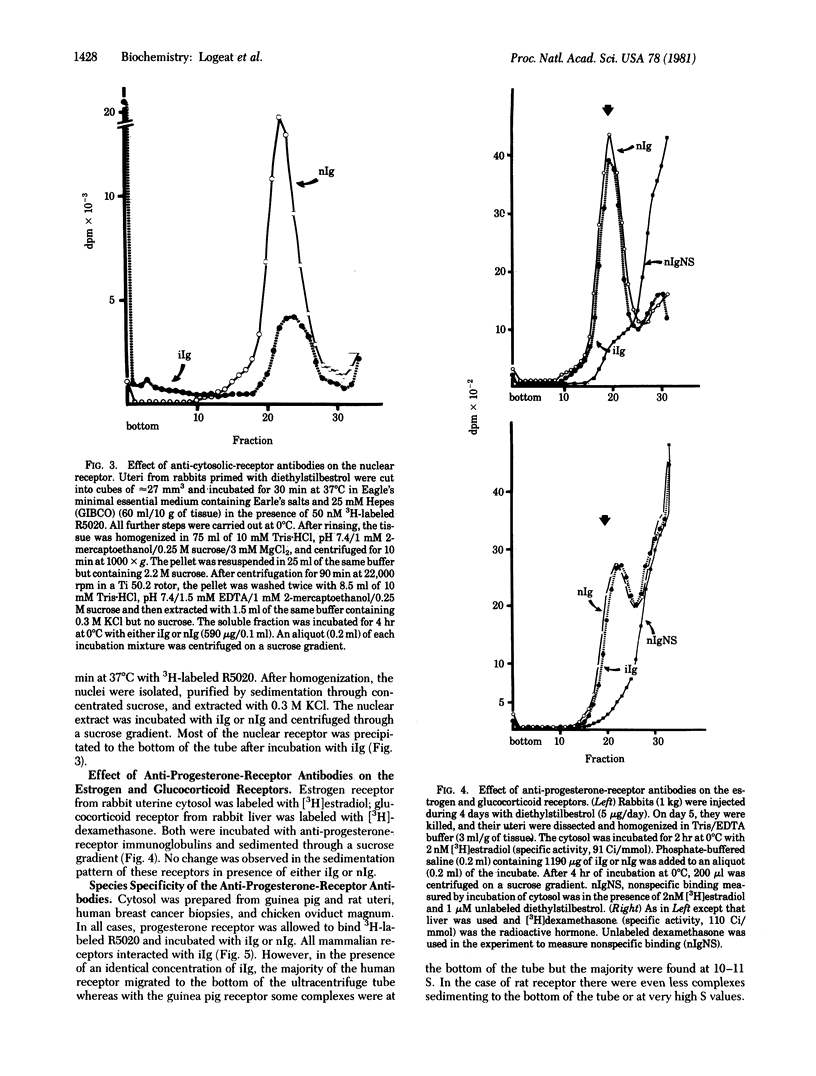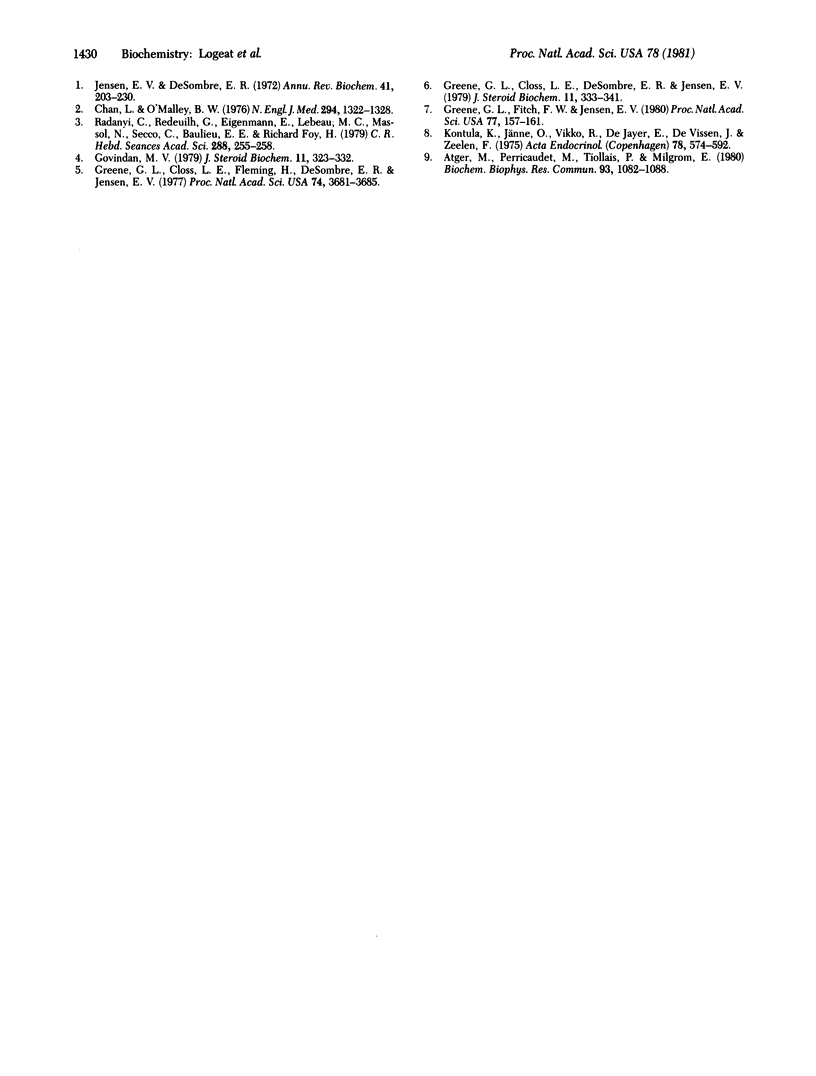Abstract
Progesterone receptor from rabbit uterine cytosol was purified to a specific activity of approximately 2 nmol of bound hormone per mg of protein. A goat was immunized with this preparation and, after two injections of 0.7-0.8 nmol, yielded antireceptor antibodies. The antiserum reacted with both cytosolic and nuclear rabbit progesterone receptor and also with progesterone receptor from other rabbit tissues (vagina and pituitary). A crossreaction was observed with progesterone receptors from other mammalian, especially human, tissues (cytosolic receptor from rat and guinea pig uterus, cytosolic receptor from human breast cancer, and nuclear receptor from human endometrium). On the contrary, there was no interaction with a nonmammalian receptor (chicken oviduct progesterone receptor). The antibodies did not crossreact with other rabbit steroid receptors (uterine estradiol receptor and liver glucocorticoid receptor) or with nonreceptor progesterone-binding proteins (transcortin from plasma and uteroglobin from uterine fluid).
Full text
PDF




Selected References
These references are in PubMed. This may not be the complete list of references from this article.
- Atger M., Perricaudet M., Tiollais P., Milgrom E. Bacterial cloning of the rabbit uteroglobin structural gene. Biochem Biophys Res Commun. 1980 Apr 29;93(4):1082–1088. doi: 10.1016/0006-291x(80)90599-9. [DOI] [PubMed] [Google Scholar]
- Chan L., O'Malley B. W. Mechanism of action of the sex steroid hormones (first of three parts). N Engl J Med. 1976 Jun 10;294(24):1322–1328. doi: 10.1056/NEJM197606102942405. [DOI] [PubMed] [Google Scholar]
- Govindan M. V. Purification of glucocorticoid receptors from rat liver cytosol. Preparation of antibodies against the major receptor proteins and application of immunological techniques to study activation and translocation. J Steroid Biochem. 1979 Jul;11(1A):323–332. doi: 10.1016/0022-4731(79)90315-7. [DOI] [PubMed] [Google Scholar]
- Greene G. L., Closs L. E., DeSombre E. R., Jensen E. V. Antibodies to estrophilin: comparison between rabbit and goat antisera. J Steroid Biochem. 1979 Jul;11(1A):333–341. doi: 10.1016/0022-4731(79)90316-9. [DOI] [PubMed] [Google Scholar]
- Greene G. L., Closs L. E., Fleming H., DeSombre E. R., Jensen E. V. Antibodies to estrogen receptor: immunochemical similarity of estrophilin from various mammalian species. Proc Natl Acad Sci U S A. 1977 Sep;74(9):3681–3685. doi: 10.1073/pnas.74.9.3681. [DOI] [PMC free article] [PubMed] [Google Scholar]
- Greene G. L., Fitch F. W., Jensen E. V. Monoclonal antibodies to estrophilin: probes for the study of estrogen receptors. Proc Natl Acad Sci U S A. 1980 Jan;77(1):157–161. doi: 10.1073/pnas.77.1.157. [DOI] [PMC free article] [PubMed] [Google Scholar]
- Jensen E. V., DeSombre E. R. Mechanism of action of the female sex hormones. Annu Rev Biochem. 1972;41:203–230. doi: 10.1146/annurev.bi.41.070172.001223. [DOI] [PubMed] [Google Scholar]
- Kontula K., Jänne O., Vihko R., de Jager E., de Visser J., Zeelen F. Progesterone-binding proteins: in vitro binding and biological activity of different steroidal ligands. Acta Endocrinol (Copenh) 1975 Mar;78(3):574–592. doi: 10.1530/acta.0.0780574. [DOI] [PubMed] [Google Scholar]
- Radanyi C., Redeuilh G., Eigenmann E., Lebeau M. C., Massol N., Secco C., Baulieu E. E., Richard-Foy H. Production et détection d'anticorps antirécepteur de l'oesstradiol d'utérus de veau. Interaction avec le récepteur d'oviducte de poule. C R Seances Acad Sci D. 1979 Jan 15;288(2):255–258. [PubMed] [Google Scholar]


